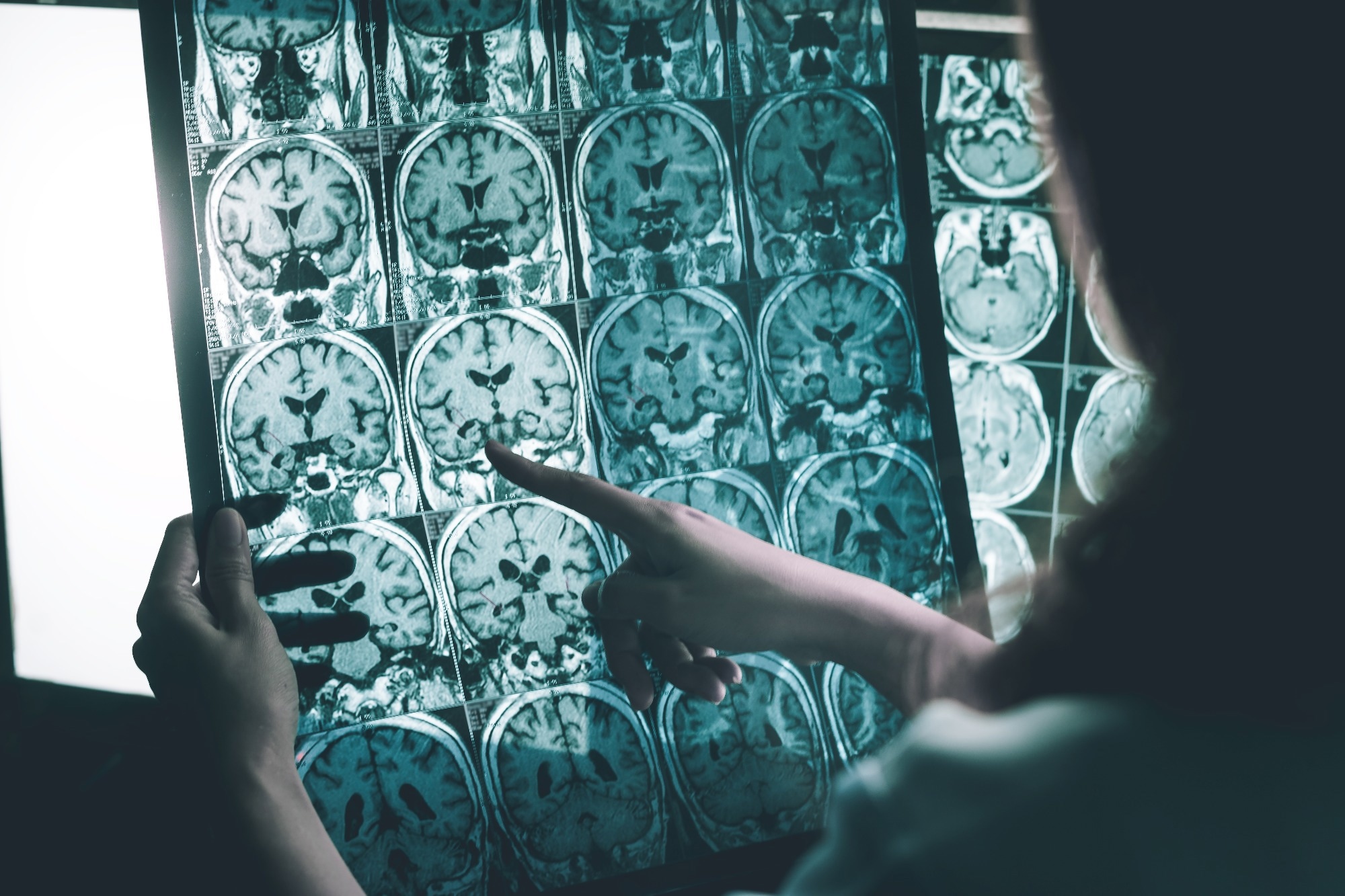In a recent review published in the International Journal of Molecular Sciences, researchers described the overlap in clinical and magnetic resonance imaging (MRI) findings between Alzheimer's disease and glaucoma.
 Study: MRI and Clinical Biomarkers Overlap between Glaucoma and Alzheimer’s Disease. Image Credit: Atthapon Raksthaput/Shutterstock.com
Study: MRI and Clinical Biomarkers Overlap between Glaucoma and Alzheimer’s Disease. Image Credit: Atthapon Raksthaput/Shutterstock.com
Background
Glaucoma, a major cause of blindness, is linked to neurodegenerative dementias like Alzheimer's. Studies have linked amyloid beta protein (Aβ), a neurodegenerative protein released by retinal ganglion cells, to Alzheimer's disease and glaucoma.
However, studies report that amyloid beta may also contribute to glaucomatous RGC mortality, highlighting its role in the disease.
Clinical and MRI biomarkers among individuals with glaucoma
Glaucoma is a multifactorial degenerative optic neuropathy defined by the loss of retinal ganglion cells, resulting in permanent vision field impairment. It is thought to be a neurodegenerative illness that begins in the brain but appears as an eye condition, lending credence to the existence of the brain-eye axis.
In glaucoma patients, large losses of magnocellular tissues at the lateral geniculate nucleus (LGN) level, LGN shrinkage, LGN degeneration, and increased LGN signal intensities are observed.
Brain degenerative alterations involving the visual cortex, LGN, and optic nerve have been observed in glaucoma patients. Using 3T-MRI, a link between the extent of LGN atrophy and AD severity has been observed.
In early glaucoma, mean diffusivity (MD) increased dramatically in the proximal levels; however, in advanced stages, MD increased in the disto-proximal optic nerve. The finding of considerably changed MD and fractional anisotropy (FA) values for optic radiation verified the disease's spread across the visual pathway.
Primary open-angle glaucoma (POAG) patients had a larger clustering coefficient in the calcarine gyrus, lingual gyrus, lateral occipital gyrus, and paracentral lobe, and global strength, global efficiency, and global clustering coefficient in glaucoma patients.
Higher values for global strength, global efficiency, and global clustering coefficient in glaucoma may indicate a whole-brain structural reconfiguration. With a 28% prevalence of glaucoma-like modifications in Alzheimer's disease patients, a neurodegenerative illness impacting the brain might induce degeneration in the ocular structures.
MRI and clinical biomarkers in Alzheimer's Disease
The superior parietal lobule, hippocampus, inferior frontal gyrus, temporal gyrus, and insular cortex are among the top ten brain areas for AD categorization. These areas are in charge of short-lived memory and the initial stages of Alzheimer's disease.
Microstructural AD alterations linked with local tissue shrinkage, tau protein loading, hypercellular lesions, ischemia, hemorrhage, edema, white matter abnormalities in the frontal region, and axonal loss and demyelination are reported.
Neuronal loss in the medial temporal and parietal lobes causes cortical atrophy in AD, which extends to limbic structures in the gray matter and, eventually, to the frontal cortex. Atrophy commences in the medial temporal lobe region involving the hippocampus and entorhinal cortex.
Hippocampal volumes are lower among individuals with AD compared to healthy individuals, and widespread hippocampal atrophy is associated with deficiencies in executive memory and functioning.
As the illness advances, gray matter loss spreads throughout the remainder of the temporal lobe, including the temporal gyrus, the temporal pole, and the fusiform and parahippocampal gyri. During memorization, studies on episodic memory in AD found reduced activity in the hippocampus, parahippocampal, and medial temporal regions.
Comparing AD to mild cognitive impairment (MCI), studies have found deficits in working memory, visuospatial ability, attention, semantic cognition, and motor function.
Reduced fractional anisotropy and increased tissue diffusivity are documented in the temporal and frontal lobes, corpus callosum, posterior cingulate, uncinate, and superior longitudinal bundles of individuals with Alzheimer's disease compared to healthy individuals.
A discriminative AD model, on the contrary, predicted reduced AF values in the crus, fornix body, and parahippocampal cingulate. MCI and AD patients have increased diffusivity in the temporal and parietal lobes, whereas alterations in the occipital and frontal areas have been observed in AD.
Shared biomarkers between Alzheimer's Disease and glaucoma
The pathological mechanisms underlying glaucoma and Alzheimer's disease are similar in many ways. Glaucoma includes brain regions other than those associated with central vision (such as the temporal lobe), which are superimposed to the regions implicated in Alzheimer's disease patients, implying that the two diseases are interlinked.
According to research, the posterior cortical atrophy (PCA) score technique used in Alzheimer's patients coincides with glaucoma sufferers. PCA scores may be used to diagnose and monitor glaucoma and AD.
Measuring atrophy in the parietal lobe can improve MRI discrimination of AD from other dementias and healthy individuals. A study reported genetic overlaps and causal associations between glaucoma and associated phenotypes (such as optic nerve structural features and intraocular pressure) and brain structure at 19 sites.
Further, 11 genetic loci with significant local connections and an increased likelihood of presenting with similar causative variations between neurodegenerative diseases and glaucoma have been identified.
Interestingly, individuals with glaucoma, optic nerve degenerative features, and Alzheimer's disease all share an area on chromosome 17 associated with the microtubule-related tau protein, a recognized genetic locus for Alzheimer's disease risk.
Conclusion
Overall, the review findings highlighted the potential of biomarkers in discovering tailored therapeutics for glaucoma and Alzheimer's disease.
However, due to their clinical scales, these indicators are restricted. In conjunction with artificial intelligence, advanced MRI methods can provide a full picture of neurodegenerative disease, potentially diagnosing glaucoma in borderline instances and accelerating medication research and development.